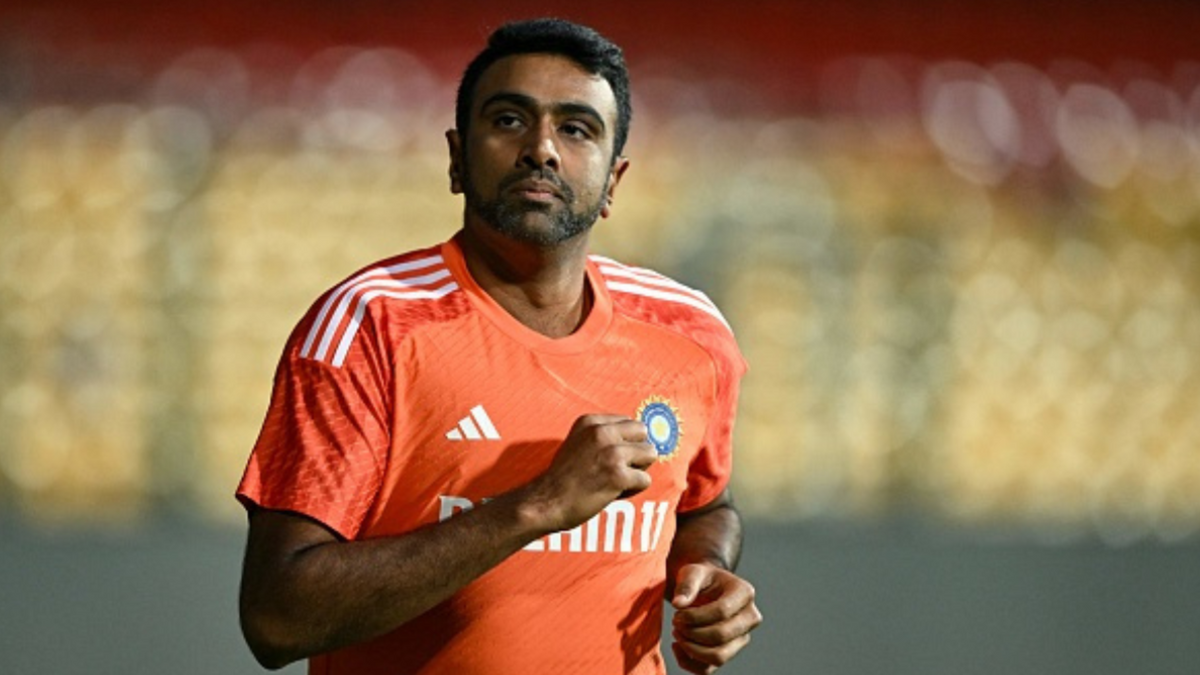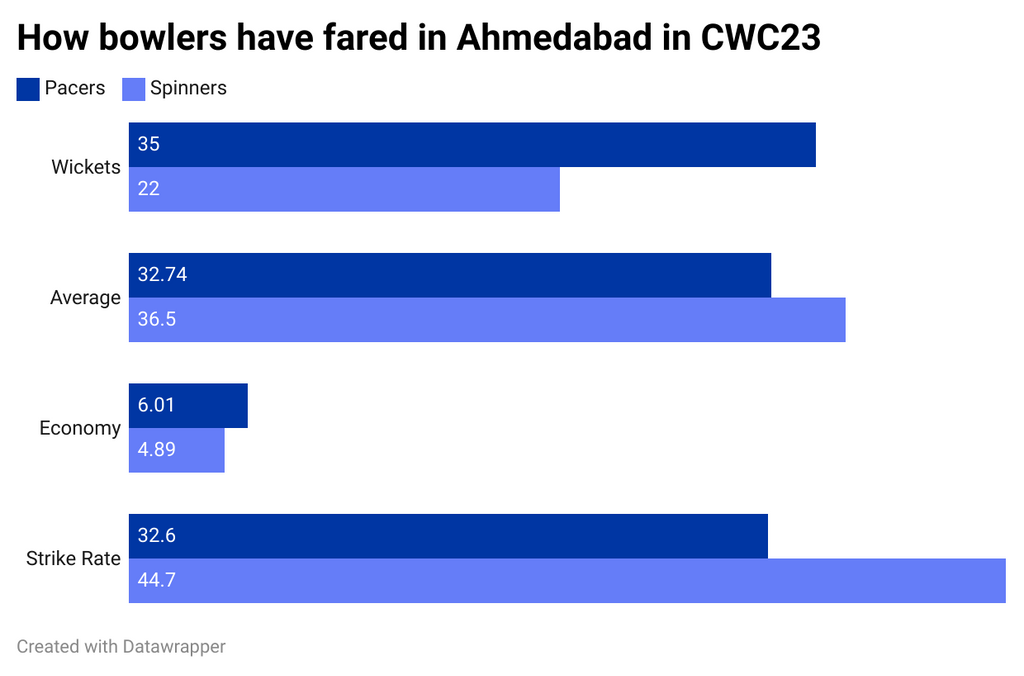
R Ashwin played only once in the 2023 World Cup, against Australia in their opener. There are strong reasons why they should gamble and pick the off-spinner for the final on November 19, writes Sarah Waris.
With Pat Cummins confirming that the pitch for the final in Ahmedabad will be the same track that was used for the India-Pakistan clash, there could be a case for Ashwin in the XI. Rohit Sharma’s team have gone unchanged since Hardik Pandya was ruled out with an injury against Bangladesh, selecting the same group for six games on the trot. Making a change in the big game against Australia by slotting in a player who has spent the last 40 days on the bench could be a big risk, but could be one worth taking nonetheless.
Let’s get the pitch discussion out of the way. The track has only been used once previously, for the India-Pakistan clash, where the spinners, admittedly, got a lot of help. Kuldeep Yadav, who ended with 2-35 in the first innings, had said at the innings break that the wicket was on the slower side. Ravindra Jadeja ended with 2-38, with the two stalling the run flow in the middle overs.
Barring Jasprit Bumrah, who often excels irrespective of pitches, the other India quicks conceded six runs an over in Pakistan’s total of 191, all of which hints that Ashwin could be a handful in Ahmedabad.
That has also been the trend in Ahmedabad in this World Cup.

Though the quicks have a better average and strike rate, it is also largely due to the pressure created by the slower bowlers, who concede just over 4.8 runs an over at the venue.
For India, Mohammed Siraj hasn’t been at his absolute best this World Cup, lacking consistency. Going in with two fast bowlers will be a major bet, the match-ups will largely favour Ashwin. It is also worth noting that when the two teams met earlier in the tournament, Hardik Pandya bowled only three overs in the game, with Siraj sending down 6.3 overs, totalling 19.3 overs from the India pacers. The composition, thus, will not be affected drastically.
In the lead-up to the T20 World Cup last year, the Indian team played Ashwin only against sides that had more left-handers, where he could turn the ball away from the bat. A surprise pick in the World Cup squad after the injury to Axar Patel, Ashwin averages 25.7 against the left-handers in ODIs, much lower than his average of 38.9 against the right-handers. With Australia expected to open with left-handers David Warner and Travis Head, India could take the bold gamble of opening the bowling with Ashwin and Bumrah.
Ashwin has a stronghold on Warner across formats, dismissing him 17 times, with the latest dismissal coming in the Indore ODI, where a right-handed Warner looked to go after the off-spinner. Warner has only faced Ashwin in 71 balls in ODIs, and while that is a small sample size, his records against him in T20s, where they have played more, is proof of the struggles. In T20s, Warner strikes at 119.8 against Ashwin, also a major reason why the off-spinner was brought on by Rajasthan Royals in the fourth over of the 2023 IPL clash against Delhi Capitals.
Till now, India have relied on Bumrah to control the runs upfront, a role he has executed perfectly, conceding only 3.14 runs an over in the powerplay. Warner, however, has found it relatively easier against the quick and is the only batter who has faced him at least eight times in the format without being dismissed by Bumrah. He will once again look to play out Bumrah while going after Siraj, who has conceded 30 fours in the first powerplay this World Cup, the third-most among all batters. Warner has gone after him previously, striking at nearly 130 in ODIs, which threatens to alleviate the pressure created by Bumrah at the other end.
Head also struggles against off-spinners, striking at 75.7 against them in ODIs, the lowest against any bowler type. Overall, he has not struck below 90 against any other bowler in the format, which indicates his ongoing issues with off-spinners. Ashwin, then, could not only trouble Warner but could also be a threat against Head in the powerplay.
Australia have also struggled against spin in this World Cup, losing 30 wickets to slower bowlers in the edition, the third-worst among all sides, with England and the Netherlands following them. The woes were evident at Eden Gardens in the second semi-final against South Africa, where they struggled to chase down 212 on a slow surface.
Rohit concluded that there could be a tinge of grass for the final, but that the wicket was expected to be on the slower side. There is a chance of dew as well, but if Ashwin is used to counter the dangerous openers, the India team could maximise his inclusion by bowling him out upfront. It’s risky, but great teams aren’t afraid of them.








